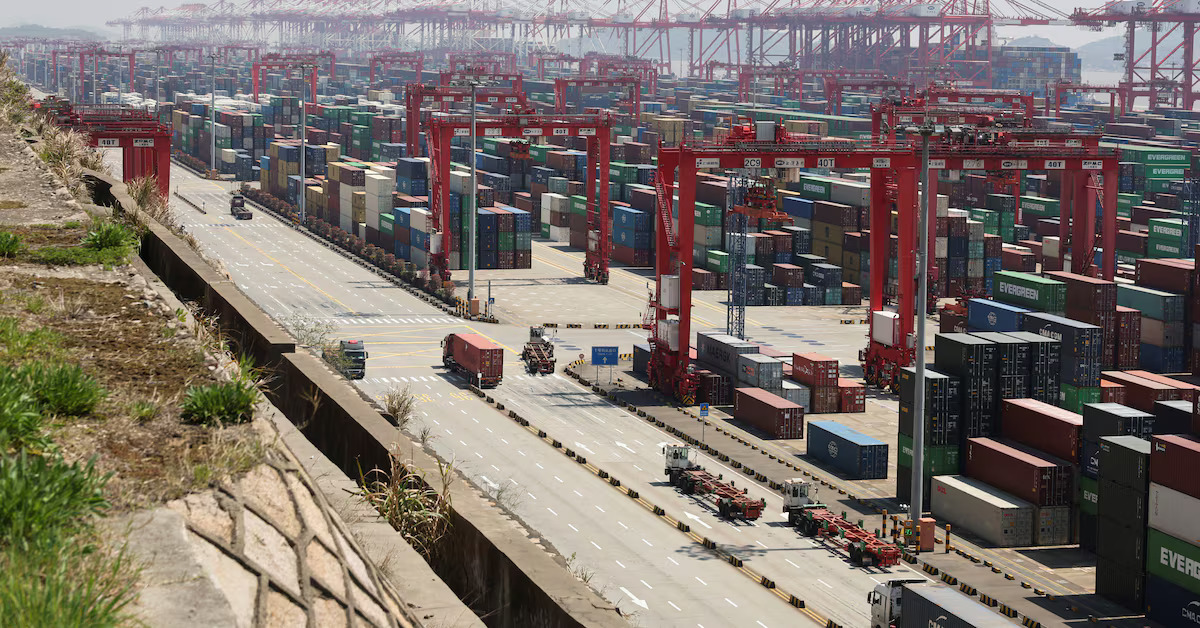China’s export growth in May fell short of expectations, with a significant drag coming from a sharp decline in shipments to the United States. Exports to the U.S. dropped by 34.5% compared to a year earlier, marking the worst decline since the early days of the COVID-19 pandemic in February 2020.
Imports from the U.S. also declined by over 18%, shrinking China’s trade surplus with the U.S. by more than 41% to $18 billion. This downturn was attributed to the lingering effects of high U.S. tariffs that were only lifted midway through the month.
China’s Export Gains Offset U.S. Decline, but Imports Fall Amid Weak Demand
Despite the poor performance in U.S.-bound trade, China’s overall exports grew 4.8% in May year-on-year, slightly missing the 5% growth predicted by analysts. Imports, however, dropped sharply by 3.4%, far worse than expected. The decline in imports reflects weak domestic demand, which continues to weigh on China’s broader economic recovery.
On a more positive note, China saw significant increases in exports to Southeast Asia, the European Union, and Africa, rising nearly 15%, 12%, and over 33% respectively—helping to partially offset the losses from the U.S. market.

Exports of certain goods saw divergent trends. While rare earth exports fell 5.7% amid tightened controls, car and ship exports rose by 22% and around 5%, respectively. In contrast, exports of smartphones and home appliances declined by 10% and 6%. On the import side, China brought in a record volume of soybeans—13.92 million metric tons—up 36.2% year-on-year. Despite mixed export performance across sectors, China’s overall trade surplus widened by 25% to $103.2 billion in May.
Trade Truce Tested as Tariff Disputes and Compliance Issues Strain U.S.-China Relations
The sharp drop in exports to the U.S. in both April and May was attributed to the imposition of 145% tariffs by the Trump administration, which Beijing countered with its own measures.
Although a trade truce was reached in Geneva that led to mutual tariff reductions—now at 51.1% for U.S. levies and 32.6% for China’s—analysts like Tianchen Xu expect a recovery in U.S.-bound exports to show in June. Xu suggests that key sectors such as rare earths and electric machinery will benefit from the easing of export supervision.
Despite the Geneva agreement, tensions between the U.S. and China have resurfaced. Both sides accuse each other of failing to comply with the terms—China citing U.S. visa restrictions and chip export controls, while the U.S. criticizes China for delaying mineral exports.
High-level talks between China’s Vice Premier He Lifeng and U.S. Treasury Secretary Scott Bessent are scheduled in London to resolve these issues. While early signs suggest recovering U.S. demand, economists warn that persistent or rising tariffs could hamper Chinese export growth in the coming months.
